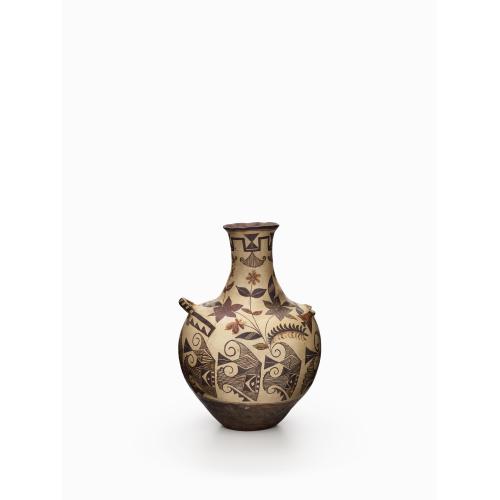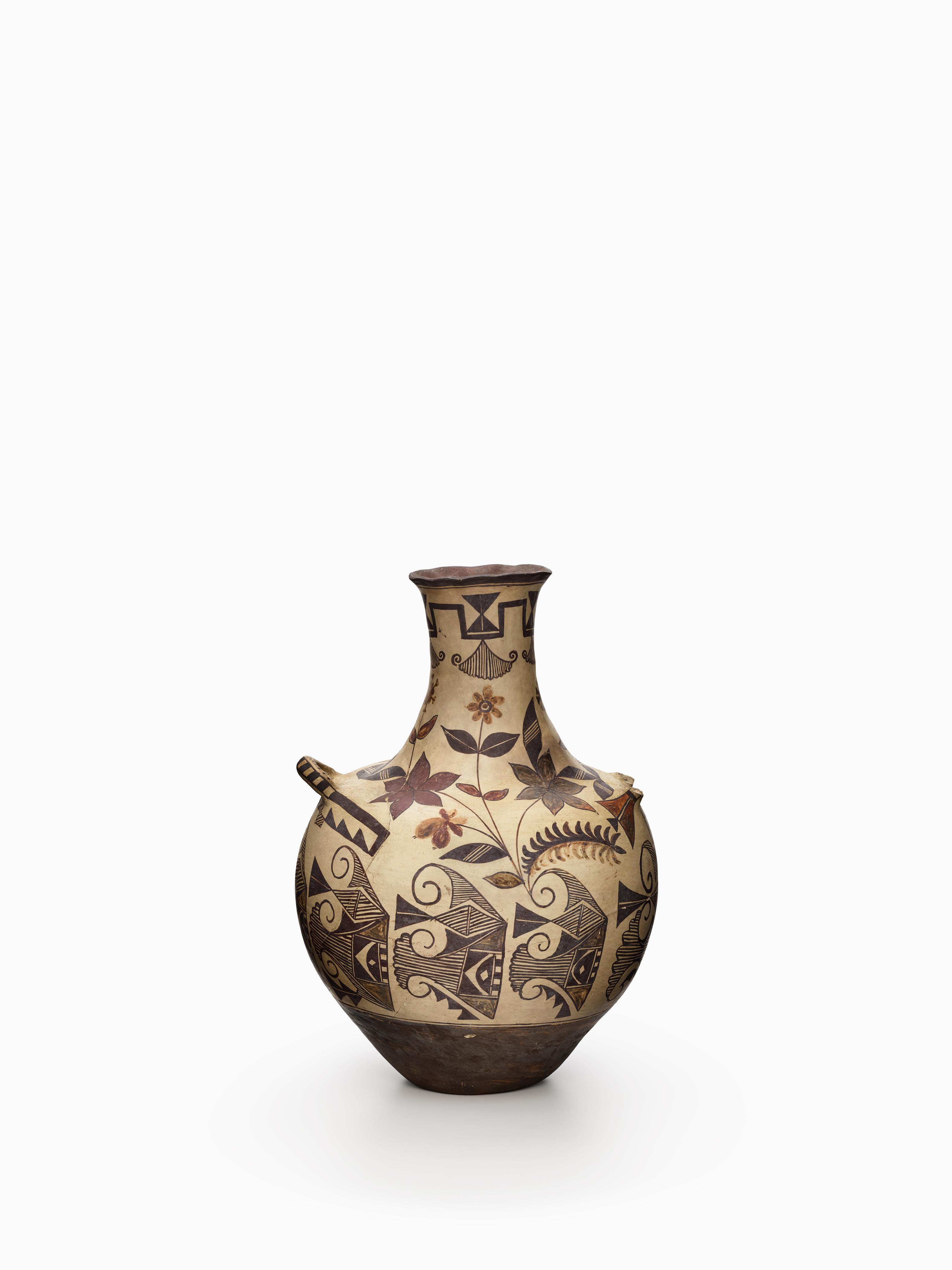
Photograph by Peter Gabriel Studio. Copyright 2020-2021 Peter Gabriel Studio.
Water jar, vase
Date: 1890-1900
Artist or Maker: Unknown
Dimensions:
Dimensions: H: 36.9 × Dia: 26 cm (H: 14 1/2 × Dia: 10 1/4 in.)
Weight: 1.8 kg (4 lb.)
Medium: clay | paints
Credit Line: Gift of Roberta Robey, 1961.
Place Made:
Valencia County, New Mexico, Southwest, United States, North America
Object Number: IAF.2796
On view
at The Vilcek Foundation, New York, NY
Tribal Collection Review RemarksAccording to the participants in the Acoma collection review visit February 17-19, 2016 (Events Record “Collection Review: Acoma Pueblo Review 5”): There are four different flowers in this design. There are also rain clouds and possibly a buitterfly. This is a vase form. Not much more was said about this vase.
According to the participants in the Acoma collection review visit February 26-27, 2019 (Events Record “Collection Review: Acoma Pueblo Review 12”): This jar was fired outdoor which is evident in the discoloration of the orange and red slips.
Vases likely came into production as a tourist trade item. The vase form may be an influence from other cultures. Vases are still being made and used today at Acoma in both traditional natural and commercial materials.
According to the participants in the Acoma collection review visit February 26-27, 2019 (Events Record “Collection Review: Acoma Pueblo Review 12”): The shape of a water jar is characterized by usually having a concave base (can also have a flat base) leading to a wider body and shoulder area. The shoulder, which is typically rounded but can also be sharp, leads inward and up to the neck and opening of the water jar. Historic water jars will sometimes have an indentation from the base the pot was built on (also known as a puki).
Water jars of all sizes are made and used. Medium to small size water jars are more commonly used to carry water as the weight of a filled water jar can become quite heavy. Large sized water jars would be used for storing water. Today at Acoma, water jars are still being used and made in both traditional natural and commercial materials.
In Collection(s)
The Indian Arts Research Center, in collaboration with Native American community scholars, strives to present accurate collections records. Records may be updated as new information becomes available and is reviewed with the Native American community having cultural affinity to particular items. Please write to iarc@sarsf.org if you have questions or concerns related to the documentation.


